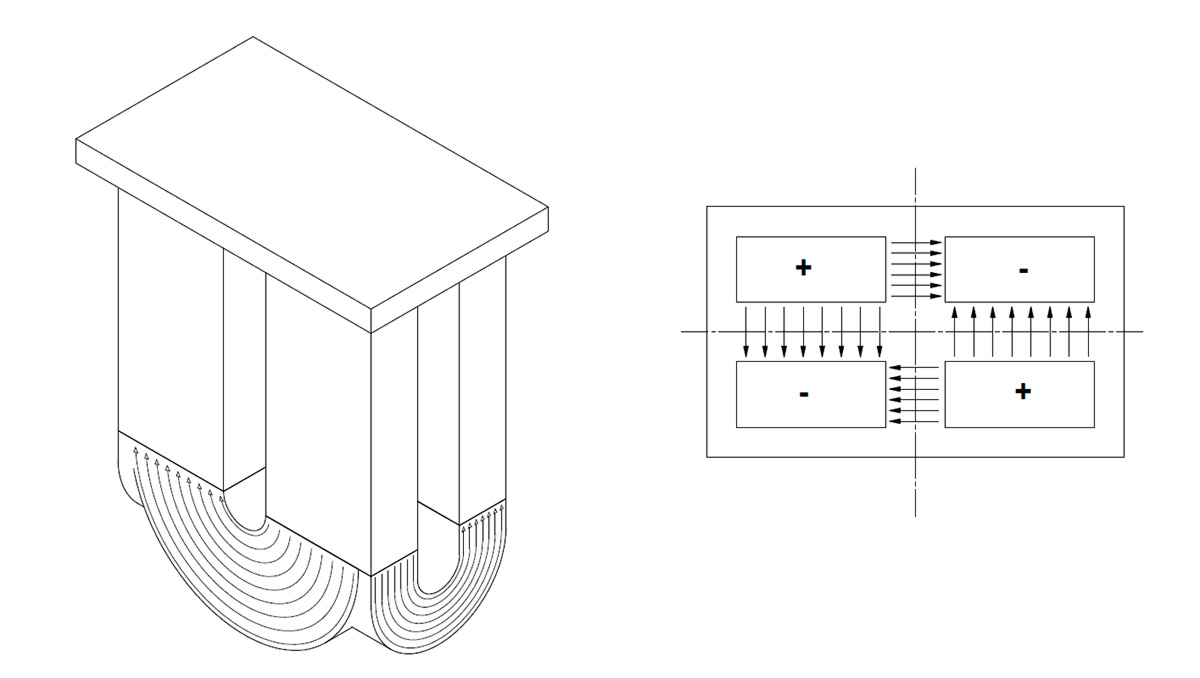Scheffer magnet lifting systems
Magnets for hollow profile transportation
Lifting magnets must be designed in such a manner that, if used for their intended purpose, the load can be safely picked up, held, transported and put down again. The holding force therefore needs to be considerably higher than the weight force of the nominal load.
For loads to be picked up safely with magnets, a sufficient magnetic force is required. This depends on a number of key factors, e.g.:
- The shape of the load
- The rigidity of the load
- The surface quality of the load
- The material properties
- The thickness of the load
- The gap between the load and magnet
When transporting hollow profiles, this gap between the load and the magnet, as well as the ‘gap’ in the material, plays a major role.
The magnets must have the deepest possible magnetic field to lift the material safely. For this reason, we mainly use bonded magnets, which generate a deep field. These may have two, three or even four magnetic poles.
How material becomes magnetised:
when ferromagnetic steel (e.g. 42CrMO4) is transported magnetically, the material still has a high level of residual magnetism after the magnetic field has been switched off. This is due to the orientation of magnetic domains known as ‘Weiss domains’. If these domains have the same orientation, the material is measurably magnetic.
This magnetic field has a major impact on the further processing of the material:
- Metal chips and grinding dust stick to the workpiece;
- Sintered tools wear out faster;
- Downtimes for robots/automatic feeding systems due to parts sticking together;
- Magnetic field sensors are activated by mistake;
- Measurement errors generated by highly sensitive measuring instruments;
- Defective weld seams;
- Defective electron beam welding;
- Uneven thickness of hard chromium or titanium nitride coatings;
- Edges break off during wire EDM;
Demagnetisation during switch-off.
Scheffer magnet systems feature a demagnetisation function that can be selected to prevent these negative effects of ‘residual magnetism’. When this function is selected, the material is exposed to a strong alternating magnetic field (polarity reversal of + and -) when the magnets are switched off. The strength of this field is consistently reduced to zero. By measuring the current quickly, the duration can be reduced to a minimum. The homogeneous orientation of the ‘Weiss domains’ is destroyed and the magnetic effect reduced externally.
The result
Once the demagnetisation process is complete, the crane’s hoisting unit is enabled once again and the material can be processed without any disruptive magnetic effects.
The current and thus the field of the magnets on the Scheffer magnet system can be infinitely adjusted by using Siemens DCM converters.
One converter is used per magnet group.
The magnetic force in partial-load operation can be controlled in the following ways:
- As a fixed value
- As step switching with binary signals or as a BCD code
- As infinitely variable pre-selection using a potentiometer or decimal value
In full-load operation, it is not possible to manually adjust the magnetic force.
However, in two-handed operation, it is possible to return to partial-load operation. Then, the magnetic force can be adjusted as described above.







